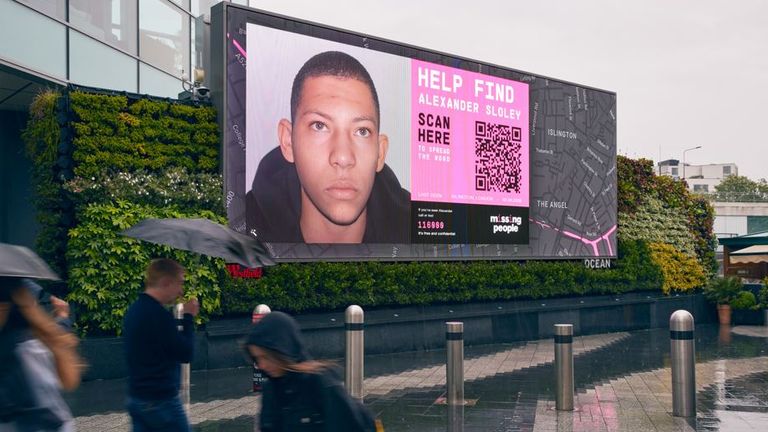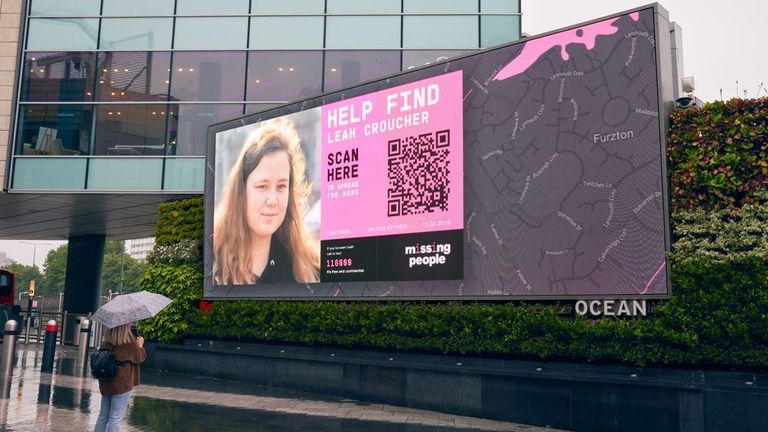[ad_1]
Missing person posters have been redesigned in the hope of increasing their impact.
They now include less information – which researchers suggest can sometimes bombard people – and feature 3D images and smiling faces, which are considered to be more memorable and more likely to make an instant connection with passers-by.
Perhaps the most noticeable difference is the absence of the word “MISSING”.
This has been replaced with the more active phrase “HELP FIND” because research shows people are more likely to engage when presented with a clear call to action.
The posters also include a QR code to encourage people to spread the word on social media.
Background maps of where the person was last seen are included because people local to the area are more likely to respond to the call to action.
The new format will appear on billboards across London on 25 May to mark Missing Children’s Day, featuring details of missing people.
The Missing People charity will use the new style for all of its posters moving forward.
Some 70,000 children and young people are reported missing every year in the UK, and many more go unreported, according to Missing People.
‘This gives us renewed hope’
Claire Croucher, the mother of Leah Croucher, who is missing, said: “One of the many challenges as a parent of a missing person is trying to communicate who you’ve lost.
“We feel that if the public were to understand who our daughter is, they are more likely to remember seeing or meeting her.
“Seeing Leah’s face move and smile on these amazing new posters is wonderful and gives us renewed hope that Leah – and other missing people like her – will be reunited with their families.”
Her daughter was 19 when she went missing from Milton Keynes in Buckinghamshire on 15 February 2019.
Read more from Sky News:
British scientists create tomato with ‘souped-up’ vitamin D
Behavioural science consultant Anita Braga, who led the research behind the posters, said: “Very often people do want to act, but they feel like they don’t have the means to, they feel a bit overwhelmed by the situation maybe, and so by telling them “help us” find rather than “missing”, giving a clear call to action is a way to make them feel empowered and also feel empathy towards the person they’re looking for.
“And then the second thing is the image – we really worked on improving the image clarity and to give the feeling that there is actually a person behind that picture.”
Smart software was used to enhance the definition of photographs, which are often supplied as low-resolution mobile phone pictures.
[ad_2]



